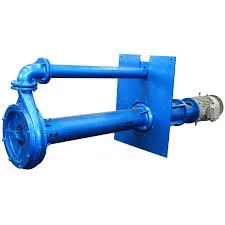Telugu
- Afrikaans
- Albanian
- Amharic
- Arabic
- Armenian
- Azerbaijani
- Basque
- Belarusian
- Bengali
- Bosnian
- Bulgarian
- Catalan
- Cebuano
- Corsican
- Croatian
- Czech
- Danish
- Dutch
- English
- Esperanto
- Estonian
- Finnish
- French
- Frisian
- Galician
- Georgian
- German
- Greek
- Gujarati
- Haitian Creole
- hausa
- hawaiian
- Hebrew
- Hindi
- Miao
- Hungarian
- Icelandic
- igbo
- Indonesian
- irish
- Italian
- Japanese
- Javanese
- Kannada
- kazakh
- Khmer
- Rwandese
- Korean
- Kurdish
- Kyrgyz
- Lao
- Latin
- Latvian
- Lithuanian
- Luxembourgish
- Macedonian
- Malgashi
- Malay
- Malayalam
- Maltese
- Maori
- Marathi
- Mongolian
- Myanmar
- Nepali
- Norwegian
- Norwegian
- Occitan
- Pashto
- Persian
- Polish
- Portuguese
- Punjabi
- Romanian
- Russian
- Samoan
- Scottish Gaelic
- Serbian
- Sesotho
- Shona
- Sindhi
- Sinhala
- Slovak
- Slovenian
- Somali
- Spanish
- Sundanese
- Swahili
- Swedish
- Tagalog
- Tajik
- Tamil
- Tatar
- Telugu
- Thai
- Turkish
- Turkmen
- Ukrainian
- Urdu
- Uighur
- Uzbek
- Vietnamese
- Welsh
- Bantu
- Yiddish
- Yoruba
- Zulu
Telephone: +86 13120555503
Email: frank@cypump.com
అక్టో . 10, 2024 23:41 Back to list
water submersible pump
Understanding Water Submersible Pumps A Comprehensive Overview
Water submersible pumps are crucial tools in various applications, primarily designed for moving fluids from one location to another while being submerged in the liquid itself. Their design allows them to operate effectively underwater, making them indispensable in industries such as agriculture, construction, and municipal water management.
What is a Submersible Pump?
A submersible pump is a type of electric pump that is hermetically sealed and submerged into the fluid it is pumping, typically water. The basic function of a submersible pump is to push water to the surface through a discharge pipe. Unlike traditional pumps that draw water upward, submersible pumps work by pushing water to the surface, which makes them more efficient in applications like well water extraction or draining flooded areas.
How Do Submersible Pumps Work?
Submersible pumps consist of a few critical components a motor, a pump, and a sealing mechanism. The motor is located at the top of the pump and is connected to the impeller, which is responsible for creating the flow of water. The motor drives the impeller, which then pushes the water upward through the pump. The sealing mechanism prevents water from entering the motor, ensuring its longevity and functionality.
Most submersible pumps operate using three main principles centrifugal force, positive displacement, and principle of submerged operation. Centrifugal pumps use rotational energy to move the water, while positive displacement pumps move water by physically pushing it through the pump. Both types have specific applications and choosing the right one depends on the requirements of the job at hand.
Applications of Submersible Pumps
Submersible pumps have a wide range of applications. In agriculture, they are often used for irrigation purposes. Farmers utilize these pumps to extract water from wells, rivers, or boreholes to irrigate crops, ensuring a steady supply of water necessary for plant growth.
water submersible pump

In the construction industry, submersible pumps are essential for dewatering projects
. They remove water accumulated in construction sites, in trenches, and in the foundations of buildings, enabling safe and dry working conditions.Additionally, municipal services utilize submersible pumps for sewage and wastewater treatment. These pumps help in transporting sewage to treatment plants, thereby playing a vital role in maintaining public health and hygiene.
Advantages of Submersible Pumps
One of the major advantages of submersible pumps is their efficiency. Since they are submerged, they do not require priming like above-ground pumps. They also tend to have a longer lifespan since they are less exposed to external elements that could lead to wear and tear.
Moreover, submersible pumps are quieter than their traditional counterparts. Due to their design, the noise generated during operation is significantly reduced, which is a crucial factor in residential areas or quiet environments.
Choosing the Right Submersible Pump
When choosing a submersible pump, several factors should be considered. Firstly, the type of fluid being pumped is essential; different fluids can affect the pump's performance and durability. Secondly, the required flow rate and total dynamic head should also be calculated to ensure the pump can meet the specific needs of the application. Lastly, material compatibility is vital to avoid corrosion and damage especially in harsh chemical environments.
Conclusion
Water submersible pumps are indispensable in various fields, from agriculture to municipal services. Understanding their functioning, advantages, and applications allows users to select the right pump for their needs. As technology advances, these pumps are becoming more efficient and versatile, catering to an ever-growing range of uses. Whether for residential, industrial, or agricultural purposes, submersible pumps continue to play a critical role in water management across the globe.
-
Heavy-Duty Mining Sludge Pumps - Wear-Resistant Slurry Handling
NewsAug.02,2025
-
Horizontal Split Case Pump with GPT-4 Turbo | High Efficiency
NewsAug.01,2025
-
ISG Series Pipeline Pump - Chi Yuan Pumps | High Efficiency, Durable Design
NewsAug.01,2025
-
Advanced Flue Gas Desulfurization Pump with GPT-4 Turbo | Durable & Efficient
NewsJul.31,2025
-
ISG Series Vertical Pipeline Pump - Chi Yuan Pumps | Advanced Hydraulic Design&Durable Construction
NewsJul.31,2025
-
ISG Series Vertical Pipeline Pump - Chi Yuan Pumps | Energy Efficient & Low Noise
NewsJul.31,2025










